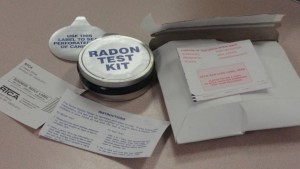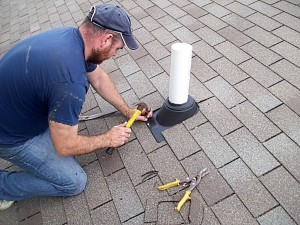 Radon — a naturally occurring radioactive gas — seeps into homes through cracks in the foundation, walls and flooring. Once inside, it collects in great amounts causing serious harm to the inhabitants within. In other words, your home may very well be killing you slowly and silently.
Radon — a naturally occurring radioactive gas — seeps into homes through cracks in the foundation, walls and flooring. Once inside, it collects in great amounts causing serious harm to the inhabitants within. In other words, your home may very well be killing you slowly and silently.
The gas is odorless, colorless and tasteless which means it’s virtually undetectable, unless you use the appropriate radon testing kit.
To be honest, the odds are stacked against you. One out of every fifteen homes in the country is estimated to have elevated levels of radon gas. To add to that, more than 21,000 Americans die each year due to radon-induced lung cancer. Of course, it doesn’t happen immediately; lung cancer is contracted after years of prolonged exposure.
Fortunately, it can be prevented pretty easily. There is a common misconception that airing out your home by opening windows and running A/C units will ventilate the radon gas. That is not true at all. Radon is an incredibly dense gas, and although it can easily seep into homes it generally remains at the lowest levels of a structure. In fact, in quite a few scenarios it’s entirely possible that opening doors and windows to a home can cause the radon levels inside to increase especially during winter months.
The only way to ventilate radon gas from a home — when there are elevated levels within — is to install a mitigation system. This should be done by a local radon contractor and professional.
Test Your Home for Radon Gas
 Before you can take action — or know whether or not you need to — you need to test your home for the presence of radon gas. Luckily, you can pick up a DIY radon testing kit at any local hardware store or online for about $12 – $15. You can also hire an experienced professional to come out and test your home if you don’t want to deal with the process.
Before you can take action — or know whether or not you need to — you need to test your home for the presence of radon gas. Luckily, you can pick up a DIY radon testing kit at any local hardware store or online for about $12 – $15. You can also hire an experienced professional to come out and test your home if you don’t want to deal with the process.
DIY testing kits require you to mail in your samples to a remote lab, where they identify the gas levels in the air samples. The results are then sent back to you about a week or two later.
The two best times to test a home for the presence of radon gas are during the summer and winter months. The weather and climate does affect the levels of gas inside the home, but these are also times residents are less likely to be opening doors and windows frequently.
If you’d like more information about radon testing you can read our in-depth feature here, or you can pay a visit to the US Environmental Protection Agency Radon page.
Install a Mitigation System to Remove Elevated Levels of Radon
As we mentioned above, if elevated levels are discovered then you need to take measures to have a radon mitigation system installed. A professional will analyze your home, radon gas readings and discuss the plan of attack. Generally, they end up running a ventilation pipe below the concrete slab under the foundation which is attached to a fan. This system is then used to remove the radon gas from underneath the home, preventing it from entering the house above.
Of course, even if a radon mitigation system is installed follow-up tests should be conducted. The mitigation system should remain on at all times, and radon tests should be conducted at least twice a year to ensure the system is working properly.
Again, just opening doors and windows in your home will not help the situation at all. If anything, it will make matters worse.



